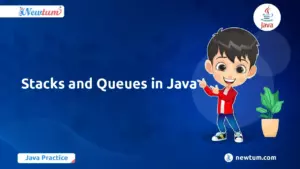Understanding how to determine odd and even numbers programmatically in Java, especially through an odd even program in Java, is fundamental for any aspiring programmer. This basic concept not only lays the foundation for more complex algorithms but also enhances problem-solving skills. Let’s explore how Java utilizes simple logic to distinguish between odd and even integers efficiently.
What is the Odd Even Program? The Odd Even program in Java defines odd numbers (having a remainder of 1 when divided by 2) and even numbers (divisible by 2 without a remainder). Using the modulus operator (%) allows Java to differentiate between these two types efficiently.
Environment Setup for Java Development Setting up a Java environment involves installing the Java Development Kit (JDK), essential for compiling and executing Java code. Popular IDEs like IntelliJ IDEA, Eclipse, and text editors such as Visual Studio Code support Java development, offering robust features for coding and debugging.
Code Odd Even Program in Java
// odd even program in java
import java.util.Scanner;
public class oddEvenEx {
public static void main(String[] args) {
Scanner sc = new Scanner(System.in);
System.out.print("Enter a number: ");
int n = sc.nextInt();
if(n%2 == 0){
System.out.println(n + " is even");
}else{
System.out.println(n + " is odd");
}
}
}
Explanation of the Code:
- Import Statement:
- import java.util.Scanner;: Imports the Scanner class from the java.util package, which is used to read input from the user.
- Class Declaration:
- public class oddEvenEx { … }: Defines a public class named oddEvenEx. In Java, the file name and class name must match.
- Main Method:
- public static void main(String[] args) { … }: The entry point of the program. It accepts user input, checks if the input number is even or odd, and prints the result accordingly.
- Scanner Initialization:
- Scanner sc = new Scanner(System.in);: Creates a new Scanner object sc to read input from the standard input stream (keyboard).
- Prompting User for Input:
- System.out.print(“Enter a number: “);: Displays a prompt asking the user to enter a number.
- Reading User Input:
- int n = sc.nextInt();: Reads an integer input from the user and stores it in the variable n.
- Odd-Even Check:
- if (n % 2 == 0) { … } else { … }: Uses the modulus operator % to determine if n is divisible by 2. If the remainder is 0, n is even; otherwise, it is odd.
- Printing Results:
- System.out.println(n + ” is even”);: Outputs a message indicating that n is even.
- System.out.println(n + ” is odd”);: Outputs a message indicating that n is odd.
- Closing Scanner:
- sc.close();: Closes the Scanner object sc to free up resources and prevent resource leaks.
This program efficiently demonstrates how to implement basic input handling, conditional statements, and output in Java to determine whether a number is odd or even based on user input.
Output:
Enter a number: 1
1 is oddReal-World Applications of Odd Even Program in Java
The Odd Even program in Java isn’t just a fundamental exercise for beginners; it has practical applications in various real-world scenarios. Here are some specific examples where Java Odd and Even can leverage this logic:
1. Scheduling Tasks Based on Odd or Even Days
- Traffic Management Systems:
- In many cities, to reduce traffic congestion, vehicles are allowed to drive on roads based on the odd or even last digit of their license plate numbers. Java can be used to develop applications that manage and enforce such rules efficiently.
- Task Scheduling:
- Businesses and schools often schedule maintenance or updates on alternate (odd or even) days to ensure regular intervals without overlap. Java programs can automate these schedules by checking the current date’s odd or even status.
2. Data Partitioning in Databases
- Load Balancing:
- Large databases often need to partition data to optimize performance and balance loads. Java applications can use odd-even logic to distribute records across multiple database shards or tables. For instance, user accounts or transactions can be partitioned into two sets based on their ID numbers being odd or even.
- Parallel Processing:
- In distributed systems, dividing tasks into odd and even groups allows for parallel processing, which can improve system efficiency and performance. Java’s multithreading capabilities make it an ideal choice for implementing such solutions.
3. Optimizing Algorithms
- Sorting Algorithms:
- Certain sorting algorithms, like odd-even transposition sort, leverage the odd-even logic to optimize the sorting process. Java, with its robust support for algorithm implementation, can be used to develop and refine these sorting methods.
- Mathematical Computations:
- In numerical computations, distinguishing between odd and even numbers can simplify problem-solving and reduce computational complexity. Java programs can efficiently handle these distinctions to optimize calculations and improve overall performance.
Example Code for Scheduling Tasks:
Snippet display Java Odd Even program in Java to schedule tasks based on odd or even days:
import java.time.LocalDate;
import java.time.format.DateTimeFormatter;
import java.util.Scanner;
public class TaskScheduler {
public static void main(String[] args) {
Scanner sc = new Scanner(System.in);
DateTimeFormatter formatter = DateTimeFormatter.ofPattern("dd MMM yyyy");
// Get today's date
LocalDate today = LocalDate.of(2024, 1, 1);
int day = today.getDayOfMonth();
String formattedDate = today.format(formatter);
// Display today's date in the specified format
System.out.println("Today's date is " + formattedDate);
// Prompt user to enter task details
System.out.print("Enter the title of the task: ");
String title = sc.nextLine();
System.out.print("Enter a description for the task: ");
String description = sc.nextLine();
// Determine task based on odd or even day
if (day % 2 == 0) {
System.out.println("Task for " + formattedDate + ": " + title);
System.out.println("Description: " + description);
System.out.println("Schedule maintenance tasks.");
} else {
System.out.println("Task for " + formattedDate + ": " + title);
System.out.println("Description: " + description);
System.out.println("Schedule updates.");
}
// Close scanner
sc.close();
}
}
Output:
Today's date is 01 Jan 2024
Enter the title of the task: Writing
Enter a description for the task: Write a blog on the Best Films to watch in 2024
Task for 01 Jan 2024: Writing
Description: Write a blog on Best Films to watch in 2024
Schedule updates.In conclusion, this blog has explored the foundational Odd Even program in Java, emphasizing its practical applications in task scheduling and data partitioning. By following best practices and exploring resources like Newtum’s programming courses, readers can enhance their skills and enjoy the journey of learning and experimentation in programming. Happy coding!
FAQs about Odd Even Number Program in Java
The Odd Even program in Java determines if a given integer is odd or even based on its divisibility by 2.
Java uses the modulus operator (%) to check if a number leaves a remainder when divided by 2. If the remainder is 0, the number is even; otherwise, it’s odd.
The import java.util.Scanner; statement allows Java to use the Scanner class for user input from the console.
The main method serves as the entry point of the program, where it prompts the user for input, checks if the number is odd or even, and prints the result.
Yes, the program can handle negative numbers. It checks the divisibility of the absolute value of the number, so -1 would be identified as odd.



